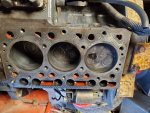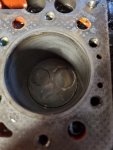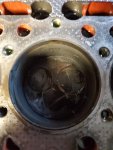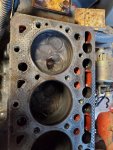Howdy, folks.
I recently got a G1800 in pretty bad shape: dirty and not running. It was covered with dirty and dust, a thick layer and everywhere.
Power washed and started working on it. Cleared the fuel line, replaced the battery and cables, couple spliced wires, and replaced the starter.
Turn the key, the motor turned over, but no running. I checked the compression on all 3 cylinders. They are all around 100 psi. No wonder it does not start.
I noticed that the air intake on the engine block was very dirty with dust covered. Engine oil was black, and overfill.
What should be my next move? I have not done any engine rebuilt in my life, but not afraid to learn if that's the route. But just want to get the obvious other causes ruled out before do the big job.
Thank you.
I recently got a G1800 in pretty bad shape: dirty and not running. It was covered with dirty and dust, a thick layer and everywhere.
Power washed and started working on it. Cleared the fuel line, replaced the battery and cables, couple spliced wires, and replaced the starter.
Turn the key, the motor turned over, but no running. I checked the compression on all 3 cylinders. They are all around 100 psi. No wonder it does not start.
I noticed that the air intake on the engine block was very dirty with dust covered. Engine oil was black, and overfill.
What should be my next move? I have not done any engine rebuilt in my life, but not afraid to learn if that's the route. But just want to get the obvious other causes ruled out before do the big job.
Thank you.






